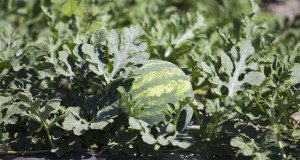Fusarium wilt of lettuce is a disease caused by the fungus Fusarium oxysporum f.sp. lactucae. The disease is present in all lettuce production areas worldwide. Recently this disease has been identified in Florida in localized fields. This new 4-page publication of the UF/IFAS Horticultural Sciences Department presents information about the disease, symptoms, and control measures useful to lettuce growers in Florida. Following these recommendations may help to avoid the spread of this fungus in muck soils at the Everglades Agricultural Area (EAA), where 90% of the lettuce in Florida is planted. Written by Germán V. Sandoya, Jesse J. Murray, Richard N. Raid, and Christian F. Miller.
https://edis.ifas.ufl.edu/hs1385
Tag: Fusarium
Fusarium Wilt (Fusarium oxysporum f. sp. niveum) of Watermelon
Fusarium wilt of watermelon is one of the most serious and difficult diseases to manage and occurs in most production regions worldwide. The fungus can be seedborne and has great longevity in the soil, allowing infested soil to also serve as a source of infection. This new 4-page publication of the UF/IFAS Plant Pathology Department signs, symptoms, and the disease cycle of Fusarium wilt and provides recommendations for cultural and chemical management. Written by Pamela Roberts, Nicholas Dufault, Robert Hochmuth, Gary Vallad, and Mathews Paret.
https://edis.ifas.ufl.edu/pp352

